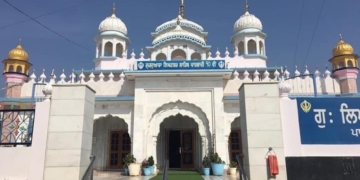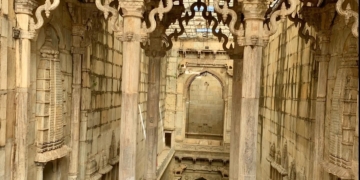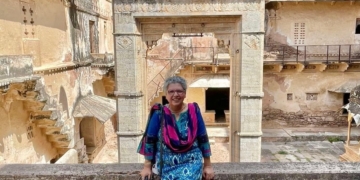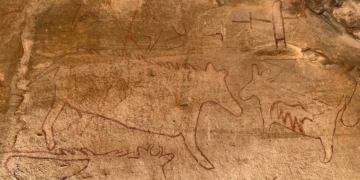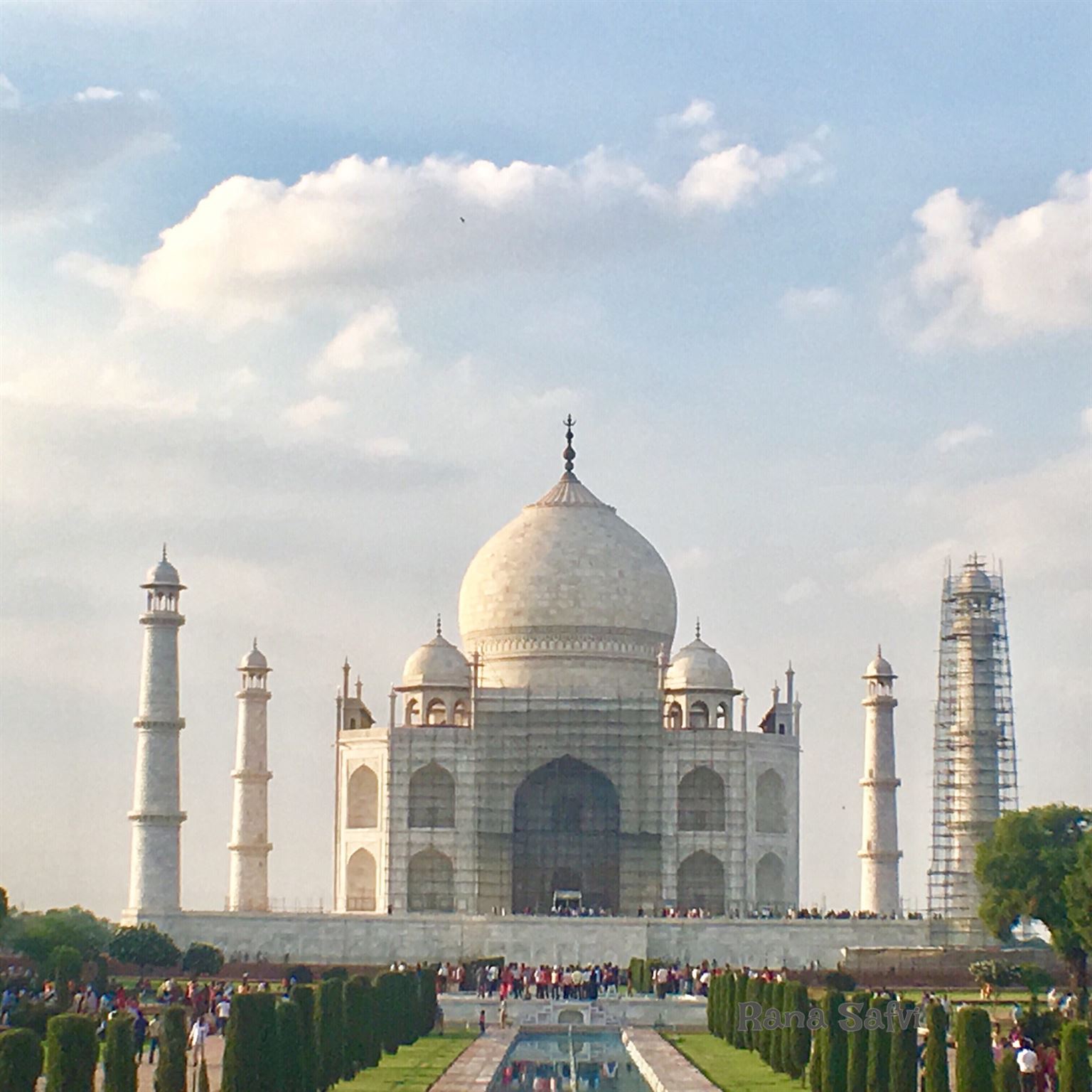No, Mughals didnt loot India. They made us rich
— Read on www.google.co.in/amp/s/www.dailyo.in/lite/politics/mughals-contribution-indian-economy-rich-culture-tourism-british/story/1/19549.html
No, Mughals didn’t loot India. They made us rich
By Rana Safvi @iamrana |
2017-09-16 18:44:48
They remained as Indians, not colonists.

India gained independence in 1947 after a long freedom struggle with British imperialism. Perhaps because of that, lack of historical knowledge and sense we see all conquests as colonisation.
Colonisation is described by professor Harbans Mukhia as “governance of a land and its people, now on behalf of and primarily for the economic benefits of a community of people inhabiting a far-off land”.
The Mughals came to India as conquerors but remained as Indians not colonists. They subsumed their identity as well as the group’s identity with India and became inseparable from it, says professor Mukhia, giving rise to an enduring culture and history.
In fact, Mukhia goes on to say that this issue of Mughals being foreign was never a discussion point till quite recently, so well had they integrated and assimilated into the country they had made their own.
There was no reason for it either since Akbar onwards all were born in India with many having Rajput mothers and their “Indianness” was complete.
Babur had invaded India at the behest of Daulat Khan Lodi and won the kingdom of Delhi by defeating the forces of Ibrahim khan Lodi at Panipat in 1526 AD. Thus, was laid the foundation of the Mughal Empire.
Most of the Mughals contracted marriage alliances with Indian rulers, especially Rajput. They appointed them to high posts and the Kachhwaha Rajput of Amber normally held the highest military posts in the Mughal army.
It was this sense of identification with the Mughal rulers that led the Indian sepoys who stood up in 1857 AD against the British East India Company in the first war of Indian Independence, to turn towards the aged, frail and powerless Mughal Emperor, Bahadur Shah Zafar, coronating him as emperor of Hindustan and fighting under his banner.

The Taj Mahal, which was built by Shah Jahan, has an average annual ticket sale of over Rs 21 crore.
From 16th century to 18th century, the Mughal kingdom was the richest and most powerful kingdom in the world and as French traveller Francois Bernier, who came to India in the 17th century, wrote, “Gold and silver come from every quarter of the globe to Hinduostan.”
This is hardly surprising considering that Sher Shah, and the Mughals had encouraged trade by developing roads, river transport, sea routes, ports and abolishing many inland tolls and taxes. Indian handicrafts were developed. There was a thriving export trade in manufactured goods such as cotton cloth, spices, indigo, woollen and silk cloth, salt etc.
The Indian merchants trading on their own terms and taking only bullion as payment, leading Sir Thomas Roe to say that “Europe bleedeth to enrich Asia”.
This trade was traditionally in the hands of the Hindu merchant class who controlled the trade. In fact, Bernier wrote that the Hindus possessed “almost exclusively the trade and wealth of the country”. The Muslims mainly held high administrative and army posts.
A very efficient system of administration set up by Akbar facilitated an environment of trade and commerce.
It was this which led the East India Company to seek trade concessions from the Mughal empire and eventually control then destroy it.
A very interesting painting in possession of the British Library painted by Spiridione Roma, named The East Offering Her Riches to Britannia, dated 1778, shows Britannia looking down on a kneeling India who is offering her crown surrounded by rubies and pearls. The advent of the famous drain of wealth from India started with the East India Company not the Delhi Sultanate or the Mughals.
Edmund Burke was the first to use the phrase in the 1780s when he said, India had been “radically and irretrievably ruined” through the company’s “continual Drain” of wealth.
Let us examine India’s economic status prior to its becoming a British colony.
The Cambridge historian Angus Maddison writes in his book, Contours of the World Economy 1–2030 AD: Essays in Macro-economic History, that while India had the largest economy till 1000 AD (with a GDP share of 28.9 per cent in 1000AD) there was no economic growth. It was during the 1000 AD-1500 AD that India began to see a economic growth with its highest (20.9 per cent GDP growth rate) being under the Mughals. In the 18th century, India had overtaken China as the largest economy in the world.
The changing share of world GDP 1600–1870 (in million 1990 international $)

Source: Angus Maddison, The World Economy, Paris: OECD, 2001, p. 261, Table B-18
In 2016, on a PPP adjusted basis, India’s was 7.2 per cent of the world GDP.In 1952, India’s GDP was 3.8 per cent. “Indeed, at the beginning of the 20th century, “the brightest jewel in the British Crown” was the poorest country in the world in terms of per capita income,” former prime minister Dr Manmohan Singh once said.
Since it’s established now that the Mughals did not take away money, let’s talk of what they invested in. They invested in infrastructure, in building great monuments which are a local and tourist draw generating crores of rupees annually.
As per figures presented by the Ministry of Culture in Lok Sabha, just the Taj Mahal built by Shah Jahan has an average annual ticket sale of over Rs 21 crore. (Last year saw a drop in visitors to the Taj Mahal and figures stood at Rs 17.8 crore.) The Qutub Complex generates over Rs 10 crore in ticket sales, Red Fort and Humayun’s Tomb generate around Rs 6 crore each.
A beautiful new style known as Indo-Islamic architecture which imbibed the best of both was born.
They invested in local arts and crafts, and encouraged old and created new skill sets in India. As Swapna Liddle, covenor of INTACH, Delhi Chapter, says, “To my mind, the greatest Mughal contribution to India was in the form of patronage to the arts. Whether it was building, artisanal crafts like weaving and metal-working, or fine arts like painting, they set standards of taste and perfection that became an example for others to follow, and brought India the global recognition for high quality handmade goods that it still enjoys.”
Mughal paintings, jewels, arts and crafts are the key possessions of many a western museum and gallery as they were looted in and after 1857. Some can be seen in Indian museums too.
Art and literature flourished. While original work was being produced in the local and court languages, translation work from Sanskrit to Persian was also taking place. Akbar encouraged the translation of the Ramayana and the Mahabharata to dispel ignorance, which led to communal hatred.
Dara Shukoh’s Persian translation of the Upanishads named Sirr-e-Akbar taken by Bernier to France where it reached Anquetil Deperron, who translated it into French and Latin. The Latin version reached the German philosopher, Schopenhauer, who was greatly influenced by it and called the Persian Upanishad, “the solace of his life”. This awakened an interest in post-Vedic Sanskrit literature amongst the European Orientalists.
It wasn’t only the Mughal emperors who were building, but Hindu mansabdars and traders too were building temples and dharmshalas in many cities, especially Banaras. Madhuri Desai in her extremely well-researched book, Banaras Reconstructed, writes: “The riverfront ghats bear an uncanny resemblance to the Mughal fortress-palaces that line the Jamuna river in Agra and Delhi.”
It’s dangerous to generalise history, especially on communal lines. While economic deprivations for the common man existed, as they did and do in any society, as Frances W Pritchett, professor emerita, Columbia University, says, “The impression one gains from looking at social conditions during the Mughal period is of a society moving towards integration of its manifold political regions, social systems and cultural inheritances.
The greatness of the Mughals consisted in part at least in the fact that the influence of their court and government permeated society, giving it a new measure of harmony.”
Thus, to say that the Mughals looted India is a falsification of facts.
It’s always best to read history in history books where one can get facts not on WhatsApp forwards where people often share false data and information as per their own bias.




